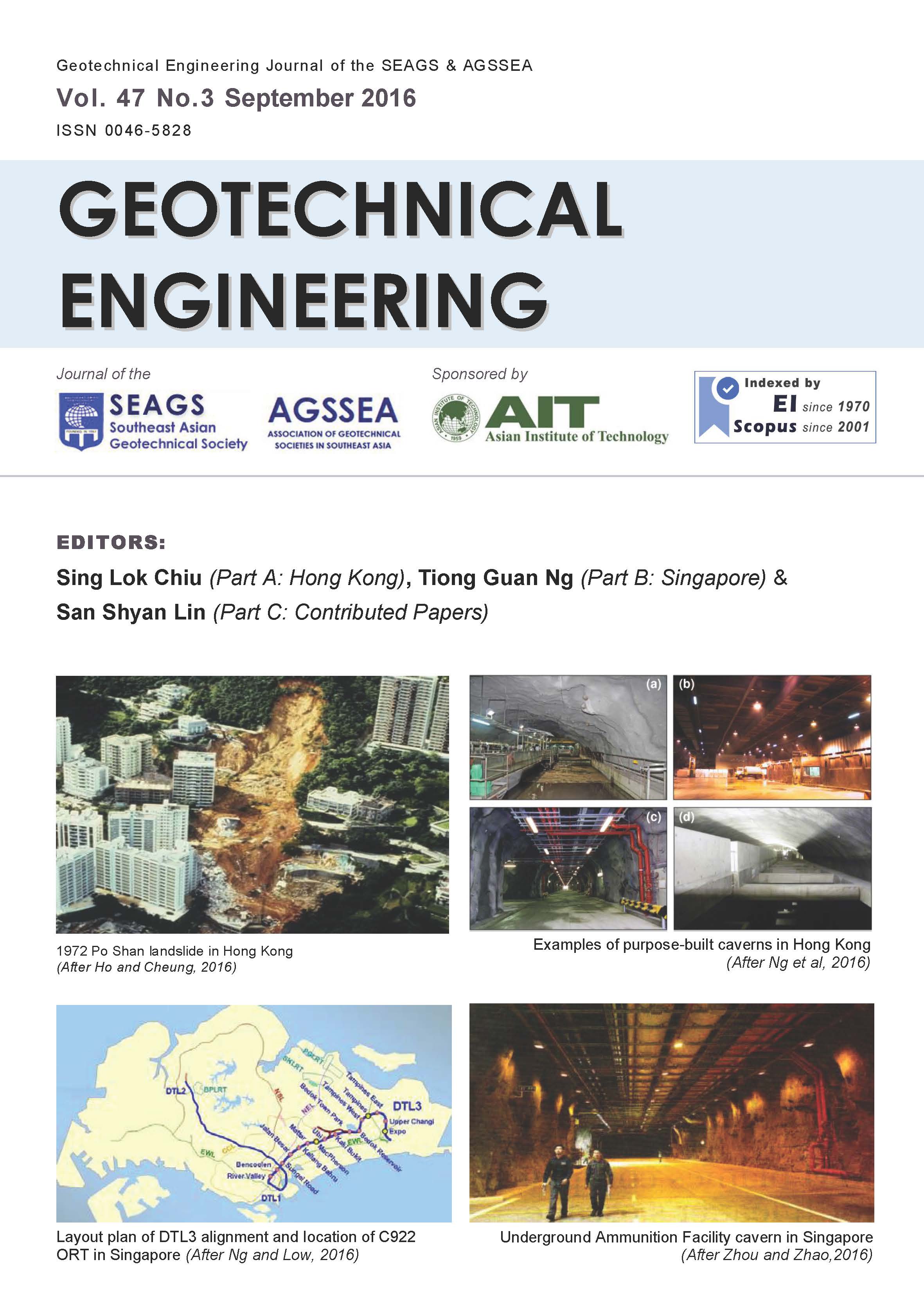Economical Design for NSF Piles in Soft Clays using Soil-Structure Interaction
Main Article Content
Abstract
Code based design of piles with NSF consider the NSF force as a dragload to be imposed on the pile as an unfavourable design action. These codes like Singapore CP4, UK BS 8004 and the recent EC7 would indirectly factor up the value of the dragload while at the same time factor down the positive shaft friction below the neutral plane. Thus the pile design in very deep soft clays typical of Singapore and Asean coastal plains will lead to very conservative pile lengths to meet the code requirements. The Unified pile design method of Fellenius recognized this deficiency and it allows for better pile design with NSF taking into account the need for both force and settlement equilibrium between pile and soil. Fortunately, EC7 also allows for interactive pile/soil analysis using modern FEM tools that can optimise pile design for NSF, particularly when the remaining consolidation settlements around the piles are relatively small. This paper will compare these methods and provide insights into the proper understanding of NSF effects on pile behaviour, and recommend the way forward for rational and economical pile design in settling soils.
Article Details

This work is licensed under a Creative Commons Attribution-NonCommercial-NoDerivatives 4.0 International License.
Copyright © 2019 Association of Geotechnical Societies in Southeast Asia (AGSSEA) - Southeast Asian Geotechnical Society (SEAGS).


